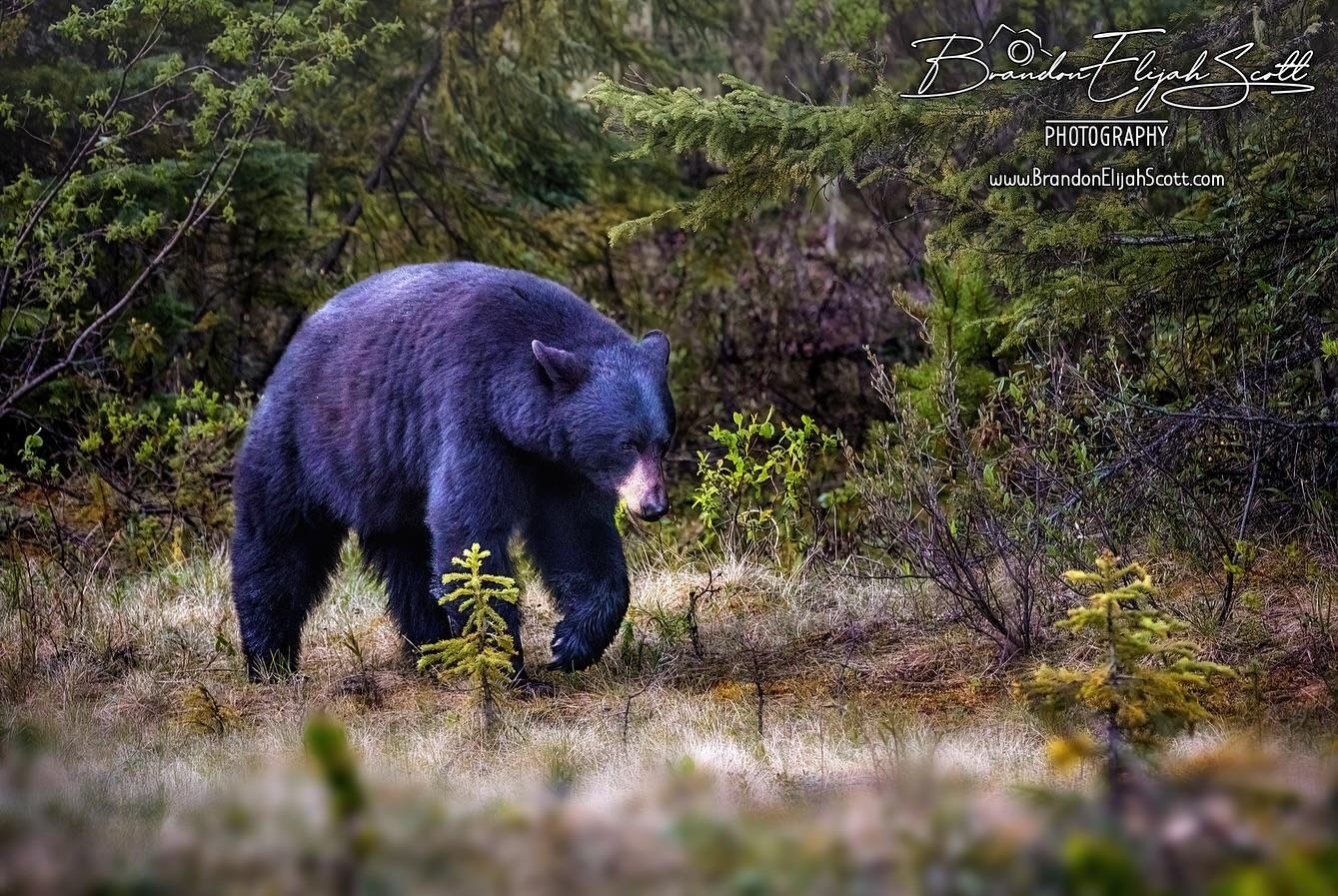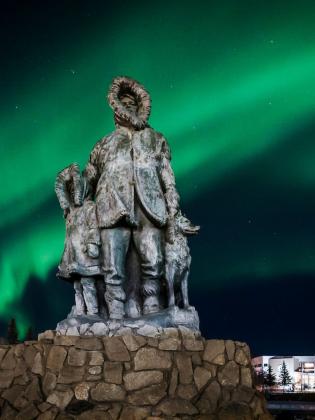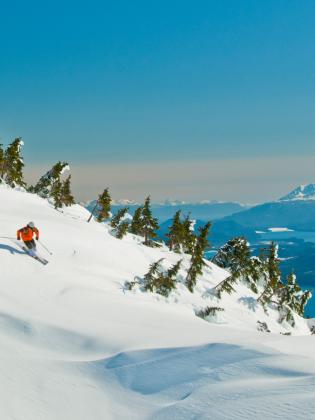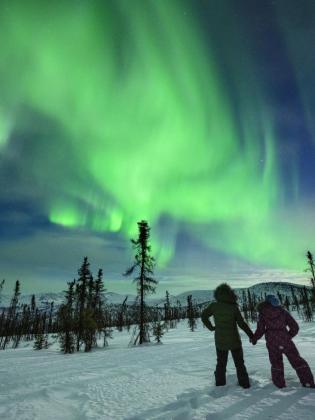
Northern Lights Viewing in Alaska
How to View the Aurora Borealis
Northern Lights Viewing in Alaska
Alaska is one of the best places on earth to see the northern lights, also known as the aurora borealis, thanks to our location under the auroral oval; clear, dark nights in winter; and variety of northern lights tours and accommodations. Travelers from all over the world come to Alaska to see this stunning display of colorful bands dancing in the dark night sky.
Best Time to See the Northern Lights
The best time to see the northern lights in Alaska is between late-August and late-April, when less daylight leads to darker night skies. While the aurora can be see any time the sky is dark, they are most often seen between 10:00pm and 2:00am.
Where to See the Northern Lights
The best places to view the northern lights are areas with clear, dark skies away from city lights. The northern lights can be seen anywhere in the state but are most often seen in the Interior and Arctic regions. Fairbanks is one of the best places to view the northern lights in Alaska due to hours of darkness in winter, auroral activity, and the amount of tours, activities, and accommodations dedicated to northern lights viewing. Other locations and towns in the Interior and Arctic regions offer more remote northern lights viewing opportunities including the Denali area, Coldfoot, and Wiseman. The Southcentral region is another good basecamp for northern lights viewing, with top destinations including Anchorage, Girdwood, and the Mat-Su Valley.
Northern Lights Tours & Forecasts
Northern lights tours are available in the Interior, Arctic, and Southcentral regions. Tour guides know the best spots for viewing and can take you off the beaten track to remote viewing locations with less ambient light. They offer single day tour options, or you can increase your chances of viewing with multi-day overnight northern lights packages, which often include meals and overnight stays at unique, remote lodging specifically-designed for northern lights viewing. If you prefer to do it yourself, you can keep an eye on the statewide aurora forecast and the Fairbanks aurora tracker. Some Alaska hotels offer a northern lights wake-up call (upon request) to wake visitors when the lights are out.
The Science Behind the Lights
The northern lights, also known as aurora borealis, occur about 60 or 70 miles above the earth’s surface — about 10 times higher than a jet aircraft flies — and can extend hundreds of miles into space. Electrically charged particles traveling through the earth’s magnetosphere collide with gasses, creating energy in the form of light. The intensity of solar flares varies the intensity and extent of activity within the Auroral oval, the ring-like area above the geomagnetic north where auroral activity is concentrated. The most common color displayed is a brilliant green, but the aurora borealis can also produce red and purple patterns.
Plan Your Trip
See the world's best lightshow on this one-of-a-kind ecotour. Enjoy unique activities like dogsledding, soaking in hot springs and hiking with...
See the world's best lightshow on this one-of-a-kind ecotour. Enjoy unique activities like dogsledding, soaking in hot springs and hiking with...

Northern Lights Viewing Tips
Each fall as the midnight sun wanes and the night skies get darker, there’s one question that we hear the most: how do I see the northern lights in Alaska? We hear you loud and clear. Witnessing…
Read more
Alaska: AKA Your Next Adventure
Where will your Alaska adventure take you? Order our Official State of Alaska Vacation Planner and plot your course.
Travel Inspiration
#TravelAlaska
#TravelAlaska
 @brandonelijahscott
@brandonelijahscott
 @brandonelijahscott
@brandonelijahscott
 @snapthedistrict
@snapthedistrict
 @brandonelijahscott
@brandonelijahscott
 @brandonelijahscott
@brandonelijahscott










































